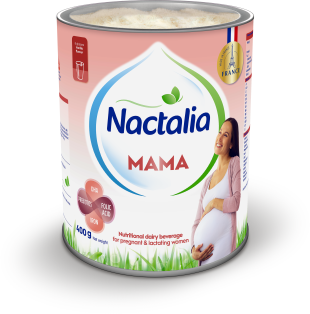
Understanding why baby is crying
As their only means of expression, crying is often part of baby’s daily life, and therefore yours too, during the first months of life. Hunger, colic, pain…there are lots of different reasons for a baby to cry and they can sometimes be tricky to identify. A short guide to help you decode baby’s cries and feel less bewildered.
Crying as a means of communication
Baby cannot talk yet, so only has one way of expressing themselves: crying. There is no point in panicking when this happens, it is perfectly natural behaviour for a baby!
By crying, baby is calling your and making you come to them. They are expressing a requirement and expect a response from you. It is frequently a request for a cuddle, sometimes it can be caused by hunger or discomfort…these requests are numerous and can vary from to day to day. Be attentive and always show them that you care.

EXPERT ADVICE: how to encourage communication during crying?
Address your baby directly and attract their attention, and their gaze in particular. You can ask them what the matter is by asking simple questions. This will help them to become more aware of their emotions.
To set a good example, don’t hesitate to share your own feelings with them.
Stay patient in order to avoid further adding to their stress! Soon you will gain a better understanding of their crying.
When crying means pain
Is it a need for attention or digestive problems? A difficult call to make simply on the basis of crying. To help you, your baby will give your a few clues here and there…
- The gastro-colic reflex
If baby is crying during a feed, they are almost certainly suffering from “gastro-colic reflex”.
If they suckle too quickly, they swallow a significant amount of milk and don’t take the time to evacuate air by burping. Their small intestines are put under pressure by this and contract strongly, causing stomach aches or stools. Baby is aware of this discomfort and struggles to finish their meal.
To help them, you can make them take a break from time to time.
– If baby is bottle-fed, take a break, try warming the milk and loosening baby’s nappy.
– If baby is breast-fed, release the first stream of milk somewhere other than baby’s mouth as it often flows too quickly, and then continue as normal.
If you are in doubt, seek the advice of your doctor.
- The gastro-oesophageal reflux
“Gastro-oesophageal reflux” results in visible regurgitations, which can also remain unseen if the fluid doesn’t reach the mouth.
To soothe baby and calm their crying, the feed or bottle should not be too big in terms of volume and should be broken up by little breaks to encourage burping. Try and also remember to loosen their nappy and to dress them in loose-fitting clothing.
If your baby is bottle-fed, ask your doctor for a thicker milk or a milk that is designed to minimise regurgitation.
- Poor lactose digestion
Poor lactose digestion is revealed by a red bottom, intestinal gas or liquid, acid stools between 20 and 30 minutes after the bottle. Contact your doctor so that they can prescribe a different, low lactose milk.
Crying in the evening: an inescapable stage?
Clean, full, cuddled…and yet whatever you do, baby just cries when it is time for bed.
Evening crying usually occurs between 6 PM and midnight and can last for up to three hours. It normally starts at around 3 weeks of age and reaches its peak at about 6 weeks, tailing off towards 3/4 months.
The signs can be considerable: baby is all hunched over with a red face, fists clenched, their forehead creased, all swollen…you may well feel distraught and bewildered. Evening crying is physiological, and whilst you wait for it to tail off at around 3 to 4 months, try and cuddle baby to calm them: carrying them, cuddling them, rocking them, singing… whatever works! Alternate these moments of cuddles with short periods during which baby will try to fall asleep themselves.












